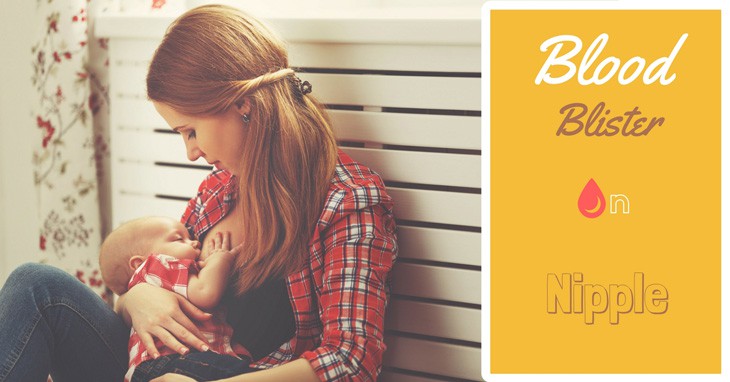
One of the trickiest tasks to do having a newborn baby in your home is breastfeeding. You may have heard already of milk and a blood blisters on nipples or friction blisters and alike.
Apparently, these things are the most common problems with breastfeeding
Although breastfeeding is largely recommended due to the benefits it caters to babies, you could actually encounter these common problems. If this is your first time having a newborn baby around you – you would probably ask…
what is a milk blister or is a blood blister a natural thing during breastfeeding?
Well as a matter of fact – these concerns are widely experienced by many moms. While you may prevent these things to happen beforehand, there are just cases that these things are inevitable.
This guide will help you better understand these breastfeeding concerns by identifying the source, knowing what these are, and how to prevent or treat them.
Milk Blister vs Blood Blister

By and large, there is a huge difference between milk and blood blister on nipples. Although many find these two things similar, the sources and the occurrences are quite different.
MILK BLISTERS
When a thin layer of skin blocks one of the openings of the nipple, it usually causes the white spots since it hinders the milk from going out.
Similarly, if there is thickened milk in one of the openings – it results to the blocking of the flowing milk.
These white spots and blockings are also known as milk blisters or blebs. In recent times, there are actually two types of blebs:
The more common type is the one that is usually experienced by most moms and that is the bleb that doesn’t hurt.
On the other hand, blebs that are painful are the second type. This kind of milk blister is more often than not experienced by moms who actually find breastfeeding an uncomfortable activity.
BLOOD BLISTERS
As for the blood blisters, they tell a different story in this case.
More often than not, blood blisters are also known as friction blisters as they are majorly caused by friction during breastfeeding.
There are times as well that these blisters are caused by high vacuum just like any blister that is found elsewhere in the body.
Causes and Treatments of Blisters
According to Breastfeeding Support, the sources and causes of blisters are usually depending on the type of the blister.
MILK BLISTERS
Milk blisters are usually caused by thickening layer of milk and skin which is a very normal experience for most moms today.
While other moms experience a painful type of milk blister on nipples, there are those who experience the bearable and tolerable type of blebs.
The nonpainful type of blebs usually heals on its own while the painful type may lead to skin problems on nipples and may need medical attention in this case.
BLOOD BLISTERS
When it comes to blood blisters, as stated above, this blister is usually caused by friction or too much vacuum.
These only happen when there is shallow latching. Hence, you must pay attention to the proper positioning during breastfeeding.
In addition, bad placements of pumps and nipple shields during breastfeeding are also found to cause friction blisters. Therefore, you have to make sure that you place your shields and pumps properly
However, when there is already a friction blister, you just need to find the location of the friction. Once you have found the exact friction area, it will heal on its own.
Blisters – Common Breastfeeding Problem
While blisters are largely considered to be common problems with breastfeeding, you could actually prevent these from happening and save you from all the stresses, pains, and hassles.
You just need to know the proper ways and positionings of breastfeeding
Hence, proper knowledge of breastfeeding may certainly help you avoid experiencing blisters and other breastfeeding problems of today.
